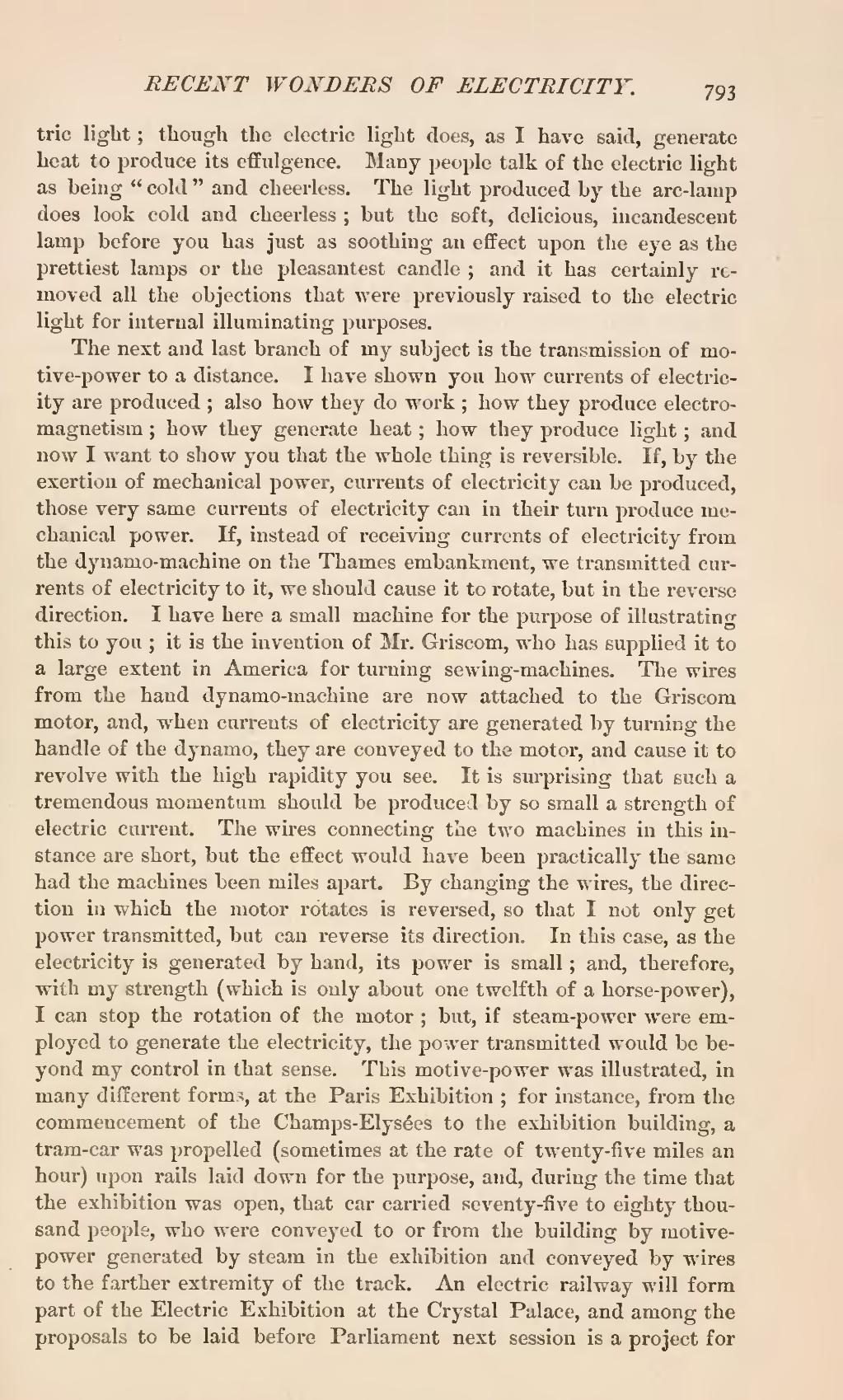tric light; though the electric light does, as I have said, generate heat to produce its effulgence. Many people talk of the electric light as being "cold" and cheerless. The light produced by the arc-lamp does look cold and cheerless; but the soft, delicious, incandescent lamp before you has just as soothing an effect upon the eye as the prettiest lamps or the pleasantest candle; and it has certainly removed all the objections that were previously raised to the electric light for internal illuminating purposes.
The next and last branch of my subject is the transmission of motive-power to a distance. I have shown you how currents of electricity are produced; also how they do work; how they produce electromagnetism; how they generate heat; how they produce light; and now I want to show you that the whole thing is reversible. If, by the exertion of mechanical power, currents of electricity can be produced, those very same currents of electricity can in their turn produce mechanical power. If, instead of receiving currents of electricity from the dynamo-machine on the Thames embankment, we transmitted currents of electricity to it, we should cause it to rotate, but in the reverse direction. I have here a small machine for the purpose of illustrating this to you; it is the invention of Mr. Griscom, who has supplied it to a large extent in America for turning sewing-machines. The wires from the hand dynamo-machine are now attached to the Griscom motor, and, when currents of electricity are generated by turning the handle of the dynamo, they are conveyed to the motor, and cause it to revolve with the high rapidity you see. It is surprising that such a tremendous momentum should be produced by so small a strength of electric current. The wires connecting the two machines in this instance are short, but the effect would have been practically the same had the machines been miles apart. By changing the wires, the direction in which the motor rotates is reversed, so that I not only get power transmitted, but can reverse its direction. In this case, as the electricity is generated by hand, its power is small; and, therefore, with my strength (which is only about one twelfth of a horse-power), I can stop the rotation of the motor; but, if steam-power were employed to generate the electricity, the power transmitted would be beyond my control in that sense. This motive-power was illustrated, in many different forms, at the Paris Exhibition; for instance, from the commencement of the Champs-Elysées to the exhibition building, a tram-car was propelled (sometimes at the rate of twenty-five miles an hour) upon rails laid down for the purpose, and, during the time that the exhibition was open, that car carried seventy-five to eighty thousand people, who were conveyed to or from the building by motive power generated by steam in the exhibition and conveyed by wires to the farther extremity of the track. An electric railway will form part of the Electric Exhibition at the Crystal Palace, and among the proposals to be laid before Parliament next session is a project for

